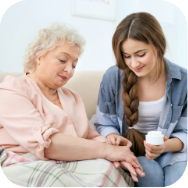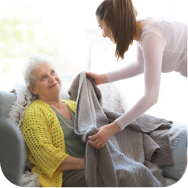Beating the Summer Heat at Home During COVID-19

Be Careful Of Dehydration
The CDC suggests that we should think of our body as like a personal air conditioning unit. Whenever your body heats up from the hot weather outside, your ‘internal’ air conditioner starts using its coolant (your sweat.) So it’s important to replenish that lost ‘coolant’ by drinking lots of water. Normal levels of thirst usually occur when there is a 2-4 % reduction of water in the body. Dehydration begins to become problematic at a slightly higher level when you start to exceed 5-8 % reduction of your body water, and by then you will already experience fatigue and dizziness. Foods that you can consume that contain a high water content (90% or over) are coconut water, lettuce, cauliflower, radishes, spinach, cabbage, broccoli, tomatoes, celery, cucumber, zucchini, grapefruit, cantaloupe, star fruit, strawberries and watermelon. Avoid caffeine drinks or alcohol, as they can actually contribute to dehydration. Also, be aware that drinking hot drinks such as peppermint tea, may cause you to sweat more.
Cool Down Your Abode
If you don’t have air conditioning, you can still cool your home down by keeping the window blinds or shades closed from late morning to early evening, provided the windows and doors are also closed. This one practice can keep a room approximately 10-15 degrees cooler. Also consider investing in blackout shades/curtains or window tinting which will offer even more cooling relief. Keep the air moving inside your home with the use of fans. Running your ceiling counterclockwise in the Summer, forces the air to push down. Ventilate at dawn or dusk by placing window fans facing the outside to blow the warm air out of your rooms. Or hang a damp sheet or towel in front of an open window to cool the air that is flowing in to your home. Use stove-top vents, bathroom and laundry room vents to dump hot air outside.
Tips To Refresh Our Bodies
Make sure to wear loose, breathable, natural fabrics such as cotton, linen or silk. Sleep on sheets that are made from 100% cotton or bamboo. Keep a spray bottle full of water next to you and mist yourself, occasionally, while sitting in front of a fan. As the water evaporates on your skin, you will feel cooler. Place your feet in a basin of cool or tepid water and soak for 20 minutes. Place rubbing alcohol or aloe vera plant gel on cloths or paper towels and wipe down your neck, arms and legs to obtain a cooling sensation. Consider buying or making a ‘cooling scarf’ that contains water-absorbing polymer crystals or beads. This is the same ingredient that disposable diapers contain. The crystals become gel-like when moistened and the beads increase in size, immensely (1 teaspoon of the polymers can yield up to 3-4 cups once soaked.) After being soaked in water, these scarves will release a gentle moisture against your skin that can keep it cool for hours be being tied around or placed on the body’s pulse points. Pulse points are areas on the body where the blood in the veins flows closest to the surface of the skin. You can also apply ice cubes in a sealed plastic bag, an ice pack or a small bag of frozen vegetables (like peas) wrapped in a hand towel to the pulse points of your body to cool down. The pulse points are found on the neck (especially the back near the brainstem which senses temperature), the wrists, the insides of elbows, the backs of the knees, the tops of your feet, the inside protruding ankle bones, the inner thighs and at the temples (just in front of the ears.)
Stay Cool And Safe!

























